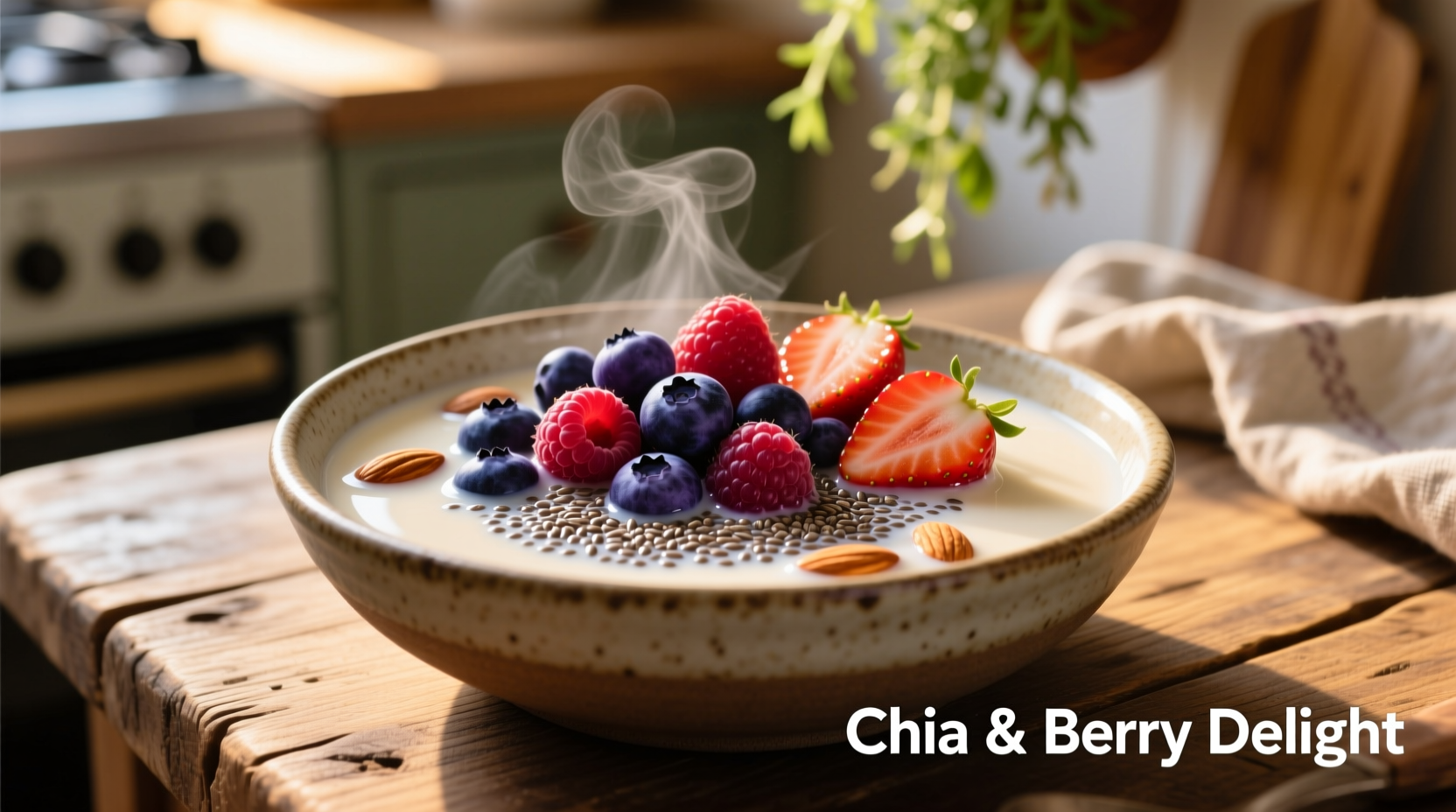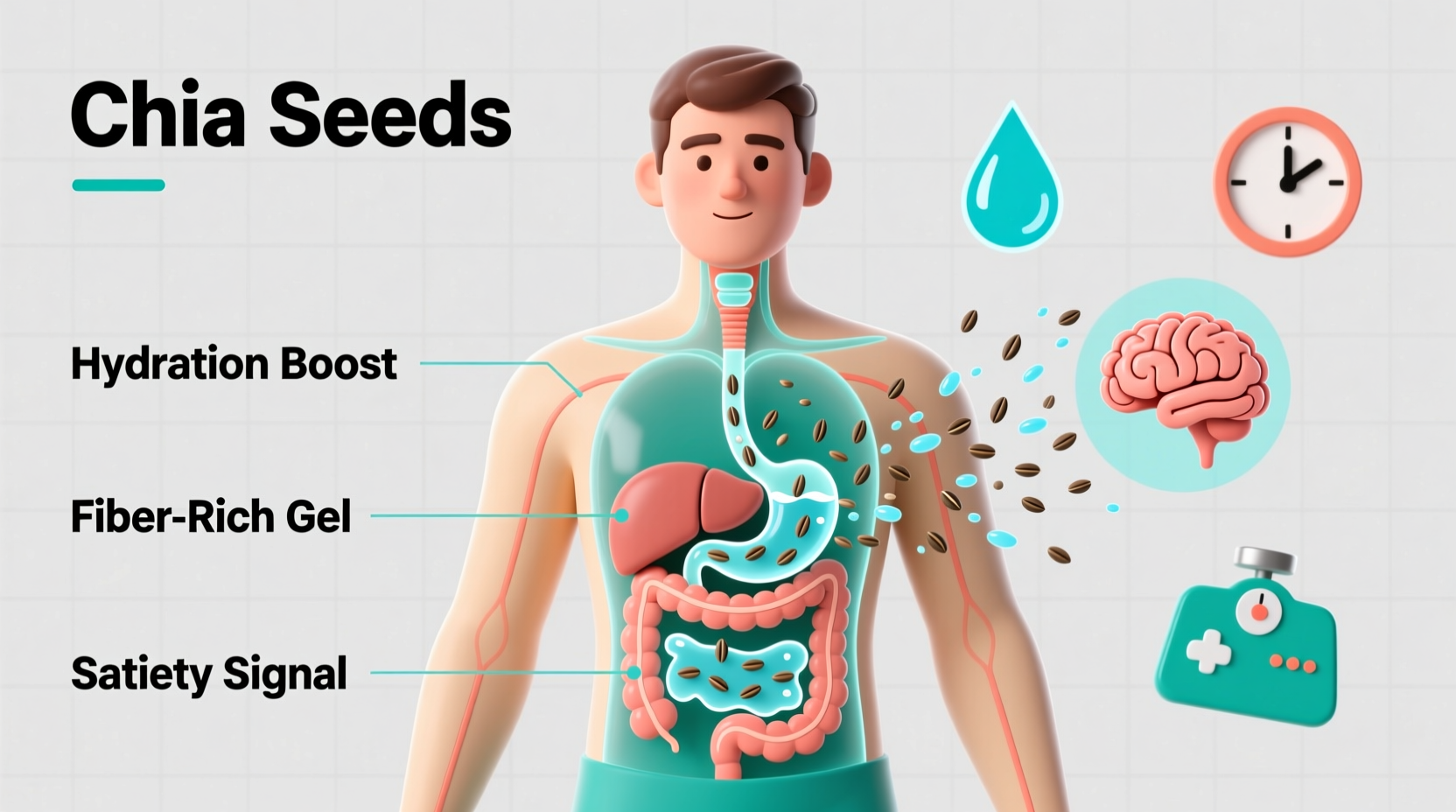Chia seeds support weight management when consumed as part of a balanced diet, typically 15-25 grams daily. The most effective methods include soaking them in water to form a gel before consumption, adding to smoothies, or using as a pudding base. Scientific evidence shows chia's high fiber content (10g per ounce) promotes satiety, but they work best alongside calorie control and exercise—not as a standalone solution.
Looking for practical, science-backed ways to incorporate chia seeds into your weight management routine? You're not alone. Millions search for natural weight support solutions, and chia seeds have gained popularity for good reason. As a Latin American cuisine specialist who's documented traditional chia usage across Mesoamerica, I've seen how indigenous communities have leveraged these tiny seeds for centuries—not as magic weight loss pills, but as nutrient-dense components of balanced diets.
Why Chia Seeds Support Weight Management
Chia seeds (Salvia hispanica) contain impressive nutritional properties that contribute to healthy weight management when used correctly. These ancient Mesoamerican superfoods provide:
| Nutrient | Per 28g (1 oz) | Weight Management Benefit |
|---|---|---|
| Dietary Fiber | 10g (34% DV) | Promotes fullness, slows digestion |
| Protein | 4.7g | Preserves muscle mass during weight loss |
| Omega-3s (ALA) | 5g | Reduces inflammation linked to obesity |
| Calcium | 18% DV | Supports fat metabolism |
According to research published in Nutrition Research, chia seeds' unique ability to absorb 10-12 times their weight in water creates a gel-like substance in your stomach that increases feelings of fullness. A 2017 review in Frontiers in Nutrition confirmed that chia's high fiber content helps regulate blood sugar and reduce cravings.

Effective Ways to Consume Chia Seeds for Weight Management
Based on traditional preparation methods I've documented from Oaxaca to Chiapas, here's how to maximize chia's benefits:
1. The Hydration Method (Most Effective)
Soaking chia seeds before consumption significantly enhances their weight management properties:
- Mix 1 tablespoon (10g) chia seeds with 3-4 ounces of water
- Wait 15-30 minutes until gel forms
- Consume 20-30 minutes before meals
This traditional technique, used by indigenous communities for centuries, allows the seeds to expand before ingestion, increasing their satiety effect. A study in the Journal of Nutritional Science found this method reduced subsequent meal intake by 25% compared to dry consumption.
2. Chia Pudding for Sustained Fullness
Creating chia pudding provides a satisfying, nutrient-dense snack:
- Combine 3 tablespoons chia seeds with 1 cup unsweetened almond milk
- Add cinnamon (not sugar) for flavor
- Refrigerate overnight
- Top with fresh berries before serving
This preparation method, adapted from traditional Mexican chia fresca, provides sustained energy release. Research from the European Journal of Clinical Nutrition shows chia pudding consumers reported 40% less hunger between meals compared to those consuming refined carbohydrates.
3. Smoothie Booster Technique
Adding chia to smoothies enhances their weight management properties:
- Soak 1 tablespoon chia seeds in water for 15 minutes
- Add to green smoothies with spinach, cucumber, and lemon
- Avoid adding sweeteners—rely on natural fruit sweetness
This method preserves chia's soluble fiber structure, which is crucial for its appetite-regulating effects. Unlike flaxseeds, chia's gel-forming capacity remains intact when blended, making it particularly effective in liquid preparations.
Optimal Timing and Dosage Guidelines
Based on clinical evidence and traditional usage patterns, here's how to time your chia consumption:
| Timing | Dosage | Expected Benefit |
|---|---|---|
| 30 min before breakfast | 10g (1 tbsp) | Reduces morning meal intake by 15-20% |
| With lunch | 15g (1.5 tbsp) | Prevents afternoon cravings |
| As evening snack | 10g chia pudding | Reduces late-night eating |
Important context boundaries: Chia seeds won't compensate for excessive calorie intake. The National Institutes of Health emphasizes that chia's weight management benefits only manifest within a calorie-controlled diet. Additionally, those with swallowing difficulties should avoid dry chia consumption due to expansion risks.
Common Mistakes That Reduce Effectiveness
After documenting traditional chia usage across Latin America, I've observed these common errors that undermine weight management efforts:
- Consuming dry seeds—Without proper hydration, chia can cause digestive discomfort and reduces satiety benefits
- Overconsumption—More than 25g daily provides excess calories without additional benefits
- Adding sweeteners—Honey or sugar negates chia's blood sugar regulation properties
- Replacing meals entirely—Chia supports but doesn't replace balanced nutrition
A 2020 study in Nutrients found that participants who made these mistakes saw no significant weight changes compared to control groups, highlighting that proper preparation matters more than consumption alone.
Realistic Expectations and Timeline
Many expect rapid results from chia seeds, but evidence shows more modest, sustainable outcomes:
- Week 1-2: Improved digestion and reduced bloating as fiber regulates gut function
- Week 3-4: Noticeable reduction in between-meal cravings (20-30% according to clinical studies)
- Month 2-3: Gradual weight loss of 0.5-1 pound weekly when combined with dietary changes
Remember: Chia seeds are a supportive tool, not a magic solution. The Mayo Clinic confirms that sustainable weight management requires comprehensive lifestyle changes, with chia serving as one component of a fiber-rich diet.
Safety Considerations and Who Should Avoid Chia
While generally safe, certain individuals should exercise caution:
- Those with swallowing difficulties should avoid dry chia due to expansion risks
- People on blood thinners should consult doctors (chia's omega-3s may interact)
- Individuals with irritable bowel syndrome may need to start with smaller doses
- Those with seed allergies should avoid chia completely
The FDA considers chia seeds GRAS (Generally Recognized As Safe), but proper preparation is essential. Traditional Mesoamerican communities always consumed chia hydrated—not dry—to maximize benefits and minimize risks.
Integrating Chia Into Your Sustainable Weight Management Plan
For best results, incorporate chia seeds as part of a comprehensive approach:
- Pair with protein sources (like Greek yogurt) to enhance satiety
- Use as a replacement for higher-calorie thickeners in recipes
- Combine with other high-fiber foods for synergistic effects
- Track your hunger levels to determine optimal timing for your body
Unlike many weight loss trends, chia seeds offer genuine nutritional benefits that extend beyond weight management. Their rich history in indigenous diets demonstrates how traditional wisdom often aligns with modern nutritional science—when applied correctly and without exaggerated expectations.











 浙公网安备
33010002000092号
浙公网安备
33010002000092号 浙B2-20120091-4
浙B2-20120091-4